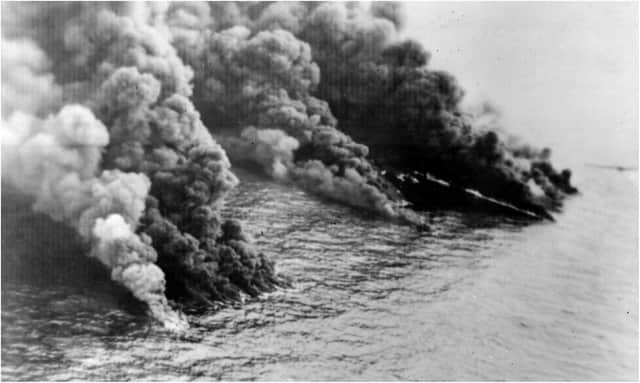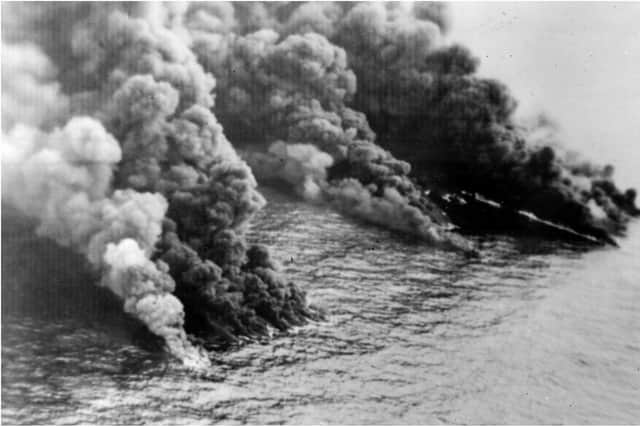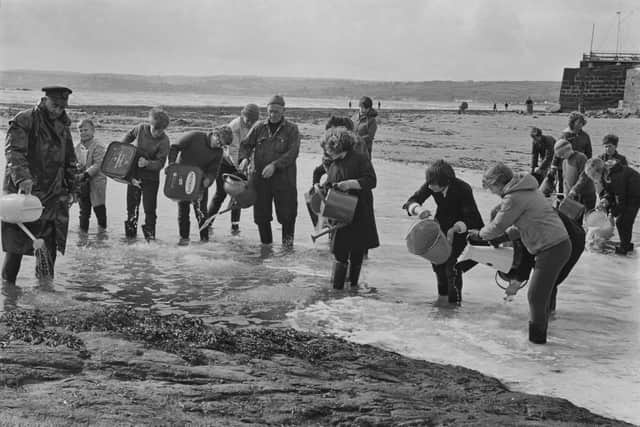Torrey Canyon ship: the worst oil spill in the UK - when and where did it happen, did the government bomb it?


As over one million gallons of crude oil has been spilled into the Gulf of Mexico, home to some of the world’s most endangered whales and sea turtles, we take a look at what was the worst ever oil spill to happen in the UK. It took place more than 60 years ago off the coast of a popular holiday hotspot known for its bodyboarding and surfing.
It happened when the SS Torrey Canyon hit the rocks of the Isles of Scilly on 18 March 1967 and sank soon after. Some 117,000 tonnes of crude oil poured out into the ocean off the coast of Cornwall and started drifting across the Channel towards the French and Spanish coasts.
Advertisement
Hide AdAdvertisement
Hide Ad

The ship was on the last leg of its journey carrying a full cargo of crude oil from Kuwait to Wales when the 297m-long (974ft) supertanker struck Pollard's Rock on Seven Stones reef, between the Cornish mainland and the Isles of Scilly. The ship became grounded but after several days it started to break up with rough seas breaking it in half, leading to the worst oil spill the UK had ever had to deal with.
The UK government at the time, led by Prime Minister Harold Wilson and his cabinet, held a cabinet meeting at the Royal Naval Air Station Culdrose near Helston to decide how to deal with the incident. In a controversial move, the government decided to drop bombs on the ship in an attempt to ignite and burn off the estimated 20,000 tons of oil that remained. The government tasked the Royal Navy with burning up the crude oil by dropping dozens of bombs on the wreck.


On 28 March 1967, Fleet Air Arm Blackburn Buccaneers from RNAS Lossiemouth dropped 1,000-pound bombs on the ship which was followed by a drop of cans of jet engine fuel as a way to burn up the floating oil. A total of 161 bombs, 16 rockets, 1,500 tonnes of napalm and 44,500 litres of kerosene were used to try and avert an environmental catastrophe. But it proved unsuccessful as any fire to burn the oil was soon put out by high tides. The government's decision also caused an international diplomatic stir as the ship was not British and was in international waters.
The oil spill led to 40 tourist beaches being contaminated with crude oil from Land's End to Lizard Point as well as in Brittany, Guernsey and Spain. Some 10,000 tonnes of these chemicals were pumped into the sea and onto beaches including Sennen Cove in West Cornwall. According to the RSPB, some 50 miles (80 km) of French and 120 miles (190 km) of Cornish coast were contaminated and 15,000 sea birds were killed, along with huge numbers of marine wildlife, before the 270 square miles slick dispersed.
Comment Guidelines
National World encourages reader discussion on our stories. User feedback, insights and back-and-forth exchanges add a rich layer of context to reporting. Please review our Community Guidelines before commenting.
